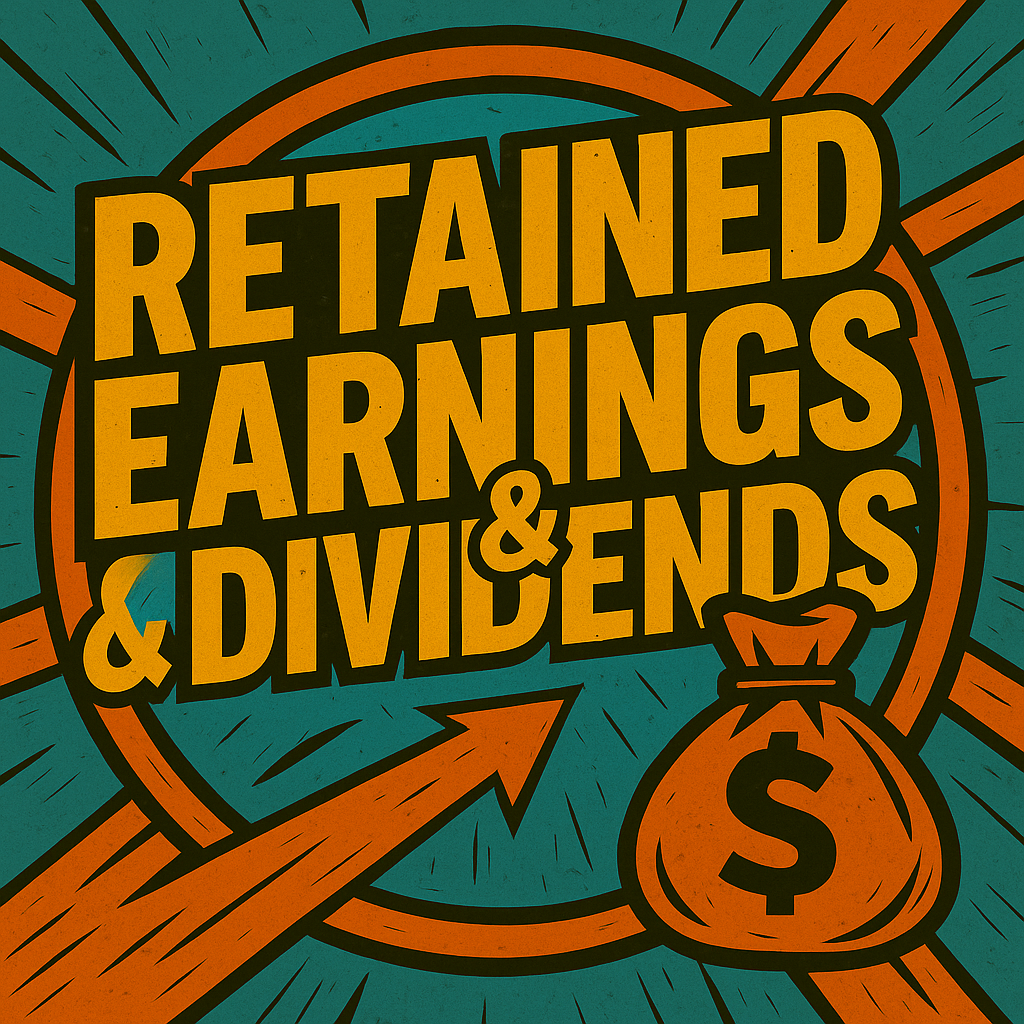
Retained Earnings & Dividends
“Fuel the Engine or Fund the Payout?”
Retained Earnings & Dividend (distributions) Policy is a core topic that bridges financial management and strategic decision-making.
It speaks directly to how business leaders handle profit: Do we reinvest for growth or return it to owners/investors?
Retained Earnings = Net Income − Dividends
Profits a business keeps after taxes and dividends…essentially, earnings not paid out, but reinvested into the company.
These funds can be used to:
Fuel future growth (new hires, equipment, marketing, R&D)
Strengthen the balance sheet
Pay down debt
Create a buffer for downturns
Dividend Policy is how a company decides whether (and how much) to distribute profits to its owners (or shareholders) — typically in the form of:
Cash dividends (common in mature businesses)
Stock dividends or owner draws (in private/family businesses)
The Growth vs. Distribution Trade-Off
Consider Retaining Earnings for Growth If:
You’re in a growth phase and need to reinvest in the business
Opportunities exist to generate strong ROI on reinvested profits
You’re improving infrastructure, tech, or product capacity
External funding is limited or expensive
Consider Distributing Dividends If:
Growth is stable or slowing
Cash reserves are healthy
Shareholders or owners expect regular income
There’s limited reinvestment need or risk appetite
Your dividend policy signals your growth posture:
- High retention, low payout = “We’re growing fast.”
- High payout, low retention = “We’re stable and returning value.”
- Balanced = “We’re growing carefully and rewarding ownership.”
Red Flags to Watch
- Retaining earnings but not generating growth
- Paying dividends while undercapitalized or overleveraged
- Inconsistent or unclear dividend policy = owner/investor/lender distrust
🏦 How Lenders View Distributions
Lenders don’t just care about how much money you’re making — they care about what you do with it.
Distributions Can Trigger Red Flags
When businesses pay out significant dividends or owner draws, they reduce cash reserves and retained earnings — and that can:
- Weaken your balance sheet
- Reduce coverage ratios (like Debt Service Coverage Ratio)
- Impair liquidity
- Violate loan covenants
⚠️ Common Impacts on Loan Covenants
| Covenant Type | How Distributions Can Cause Trouble |
|---|---|
| DSCR (Debt Service Coverage Ratio) | Payouts reduce cash available for debt payments |
| Minimum Net Worth | Excessive distributions shrink retained earnings and equity |
| Capital Retention Requirements | Some agreements restrict or cap owner distributions |
| Restricted Payments Clauses | May prohibit dividends if financial targets aren’t met |
What Lenders Expect
- Consistency: A clear, predictable distribution policy
- Discipline: No large payouts when profits or cash flow are weak
- Compliance: Respect for covenant thresholds and capital maintenance rules
- Communication: Transparency with lenders about dividend plans
Pro Tip: Balance Risk and Reward
Before declaring dividends or taking an owner draw:
- Review your loan agreements — many contain restrictions on distributions.
- Recalculate key ratios as if the distribution already happened.
- Ask: “Will this hurt our ability to borrow or stay in compliance?”
Lender-Friendly Approach
If your business is profitable and healthy:
- Retain enough earnings to meet all obligations and cushion future periods
- Limit payouts when gearing up for growth or carrying debt
- Document your dividend rationale and share it with your banker if needed
Bottom Line
A lender’s confidence hinges on your ability to manage cash wisely, maintain covenant compliance, and keep reinvestment options open. Smart businesses align payout policy with debt obligations and growth plans.

Final Thought
Every dollar of profit has two futures: reinvest or return.
A smart retained earnings and dividend policy aligns with your business stage, capital needs, and growth potential — and keeps stakeholders on the same page.

